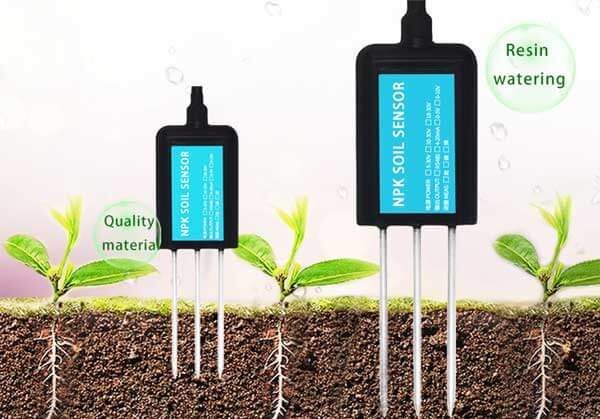Soil sensors are valuable tools used in agriculture and environmental monitoring to gather essential data about soil conditions. These sensors provide real-time information on moisture levels, temperature, nutrient content, and salinity, among other parameters. By understanding the soil’s characteristics, farmers and researchers can make informed decisions regarding irrigation, fertilization, and land management. In this article, we will explore the various applications of soil sensors and their significance in different fields.

Agriculture:
Soil sensors play a vital role in modern agriculture by assisting farmers in optimizing crop yield and minimizing resource wastage. They provide accurate measurements of soil moisture, allowing farmers to determine the optimal timing and amount of irrigation required for their crops. This helps prevent overwatering or underwatering, leading to water conservation and improved plant health.
Furthermore, soil sensors can measure the nutrient content of the soil, enabling farmers to tailor their fertilizer application according to the specific needs of the crops. This precision agriculture approach ensures efficient nutrient utilization, reduces environmental pollution, and maximizes crop productivity. Additionally, by monitoring soil temperature, farmers can determine the ideal planting time and protect crops from temperature extremes.
Environmental Monitoring:
Soil sensors are used extensively in environmental monitoring programs to assess soil quality and identify potential contaminants. These sensors can detect the presence of pollutants such as heavy metals, pesticides, and petroleum hydrocarbons, providing critical data for soil remediation efforts.
In ecological research, soil sensors help scientists understand the impact of environmental factors on soil health and biodiversity. By continuously monitoring soil conditions, researchers can study the effects of climate change, land use practices, and pollution on soil ecosystems. This knowledge contributes to the development of sustainable land management strategies and conservation efforts.
Land Management:
Soil sensors are valuable tools for land management purposes, particularly in urban planning and construction projects. Before initiating construction, engineers can use soil sensors to assess soil stability, compaction, and moisture content. This information helps in designing appropriate foundations and drainage systems, preventing structural failures due to unstable soil conditions.
In urban agriculture and rooftop gardening, soil sensors assist in monitoring soil quality and ensuring optimal conditions for plant growth. The sensors provide feedback on moisture levels, nutrient availability, and pH, helping urban farmers maintain healthy soils in limited spaces.
Forestry:
Soil sensors are also utilized in forestry applications to assess the soil’s suitability for tree growth and identify potential issues affecting forest health. By monitoring soil moisture and nutrient levels, forest managers can make informed decisions regarding reforestation efforts, species selection, and forest management practices. This data aids in preventing soil erosion, promoting sustainable timber production, and preserving forest ecosystems.
Research and Education:
Soil sensors are valuable tools in scientific research and educational settings. They allow researchers and students to conduct experiments and gather data on soil properties, helping deepen our understanding of soil science. By engaging students in hands-on activities with soil sensors, educators can promote environmental awareness and inspire future generations to pursue careers in agriculture, ecology, and environmental sciences.

Conclusion:
Soil sensors have a wide range of applications in agriculture, environmental monitoring, land management, forestry, research, and education. These sensors provide crucial data on soil moisture, temperature, nutrient content, and salinity, enabling informed decision-making for optimal crop yield, resource management, and environmental conservation. By harnessing the power of soil sensors, we can maximize agricultural productivity, protect soil ecosystems, and ensure sustainable land use practices for a greener and healthier future.